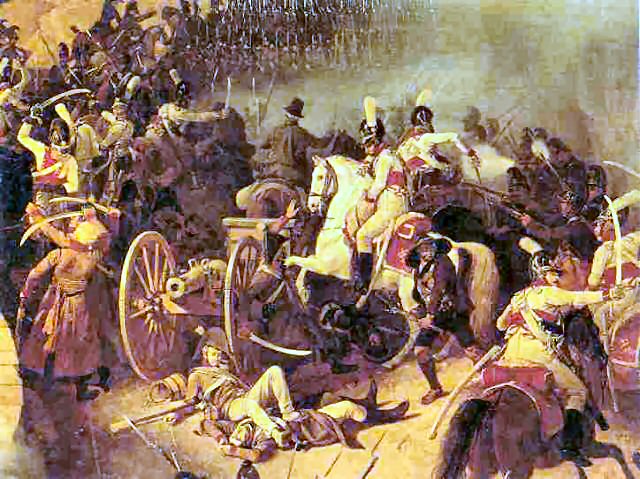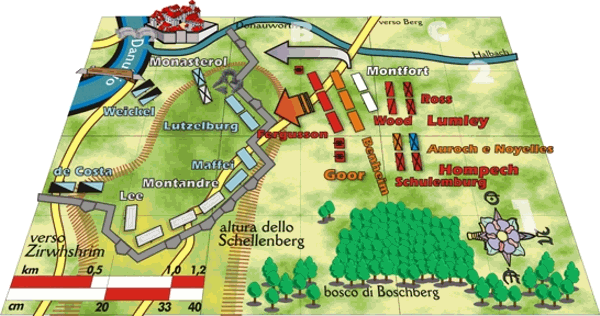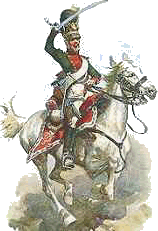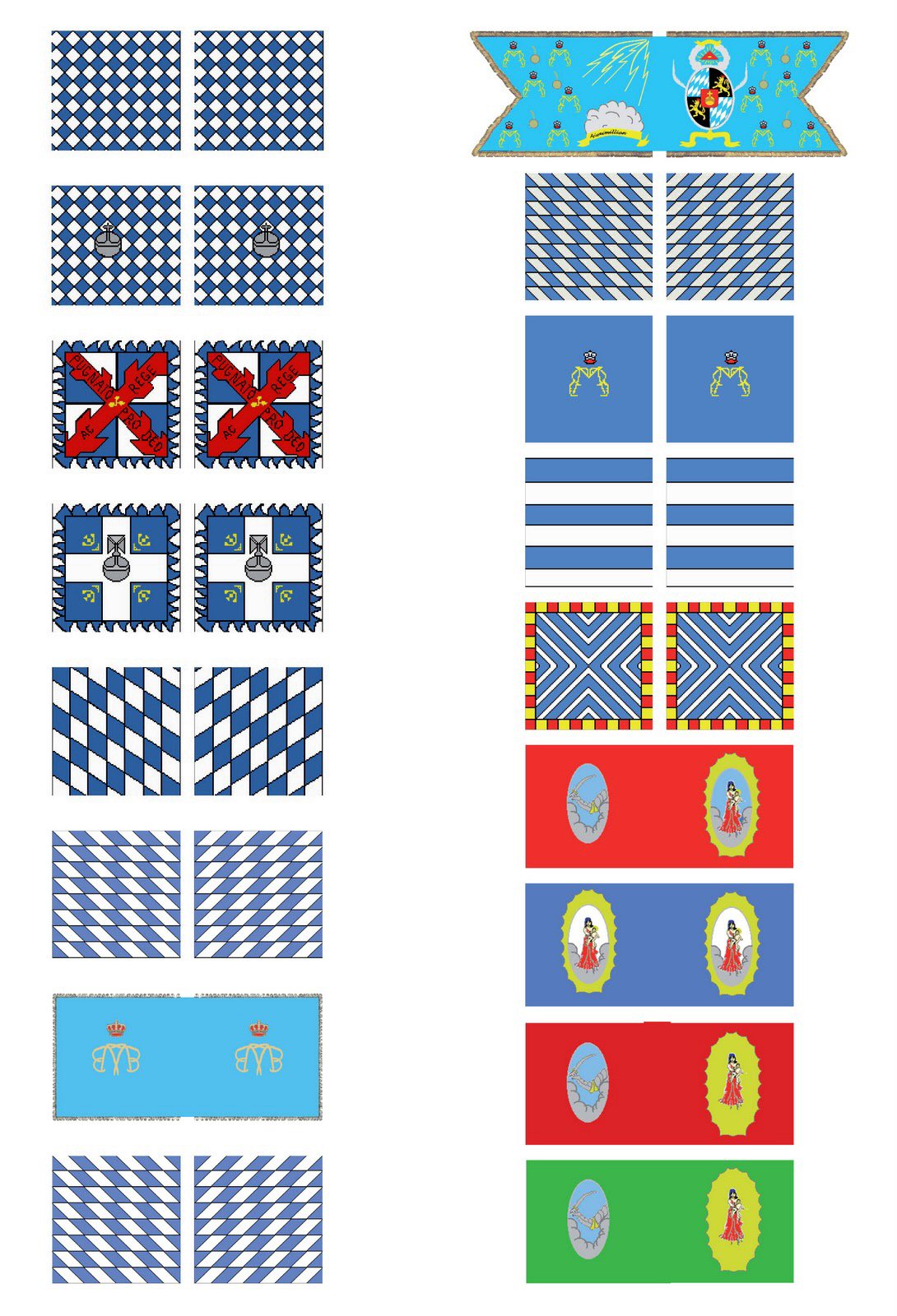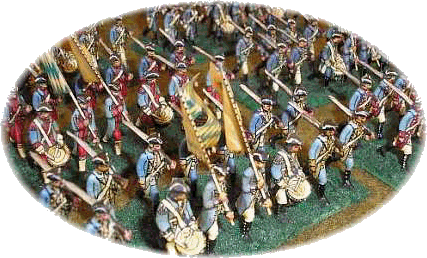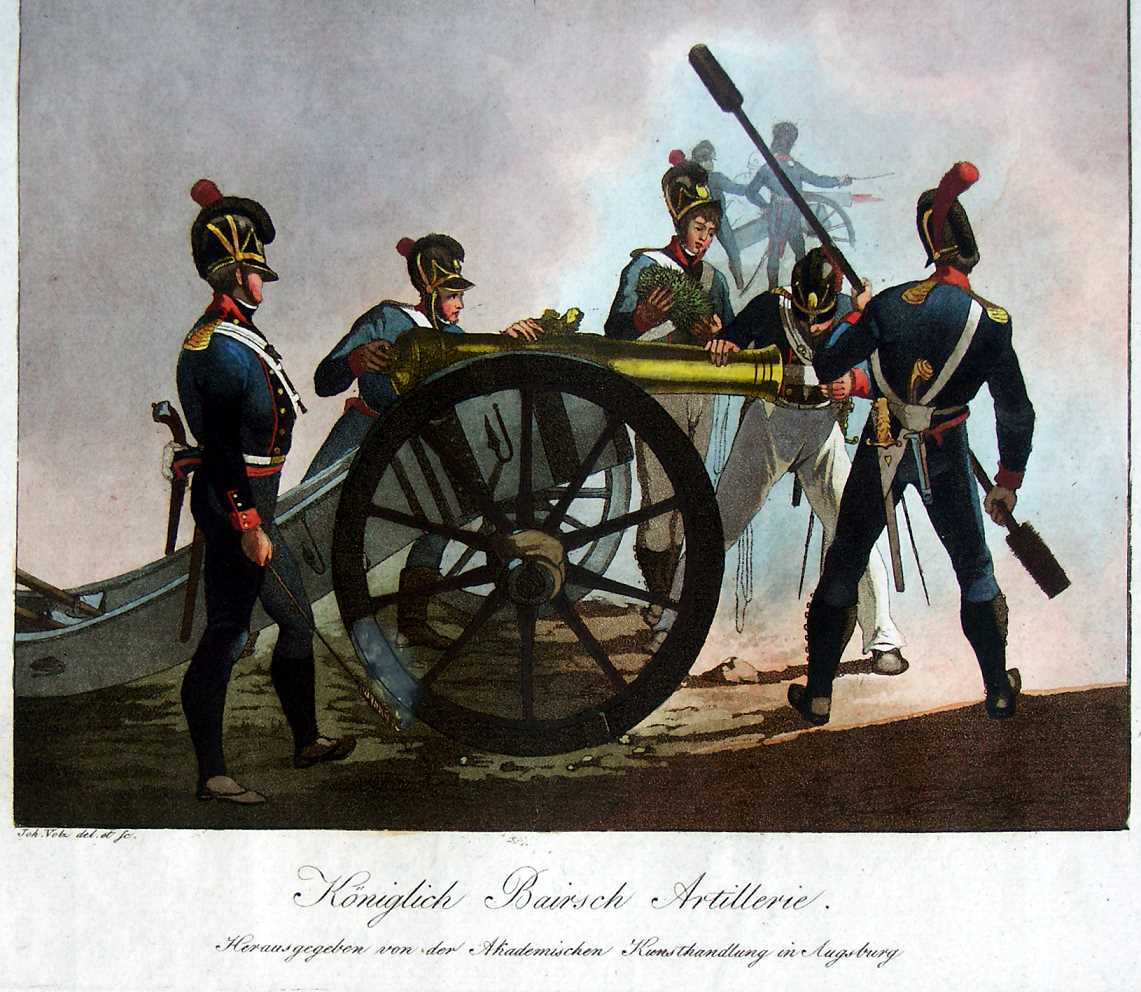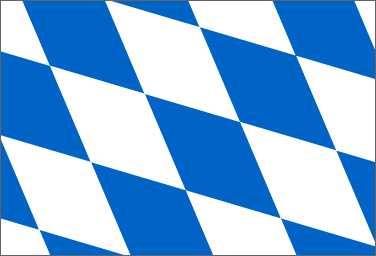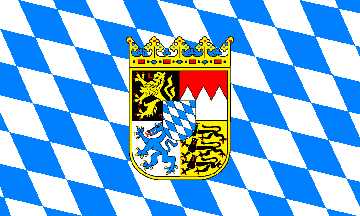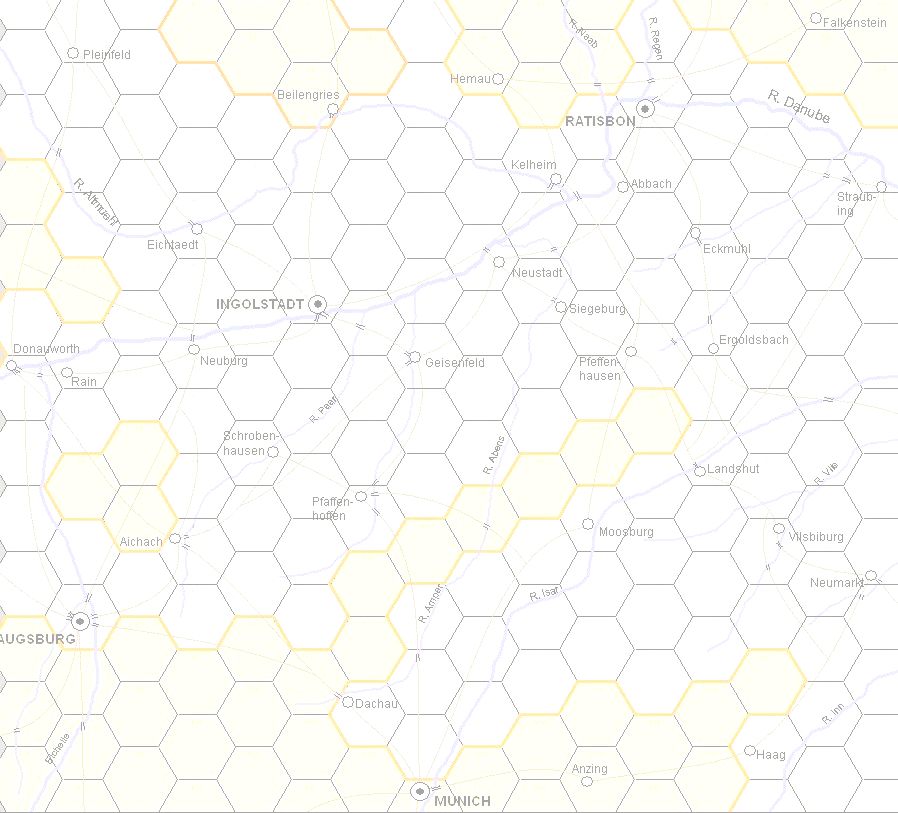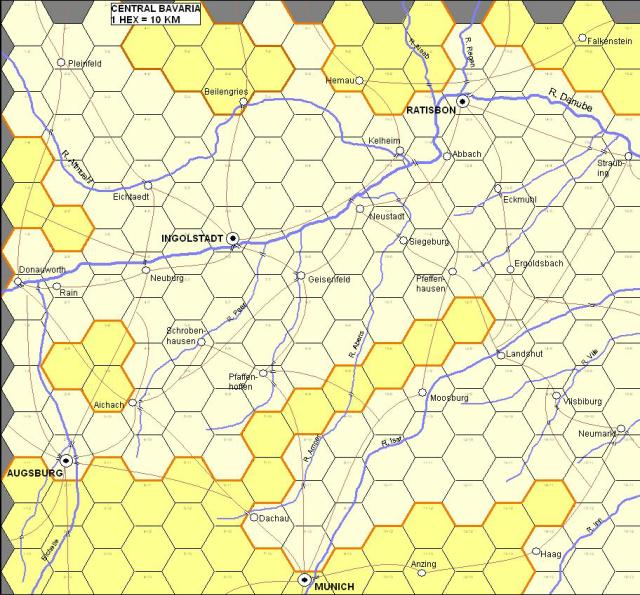
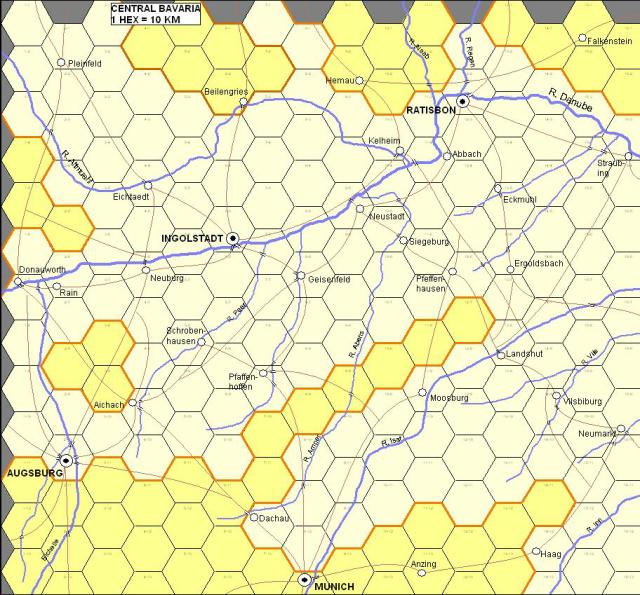
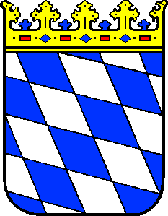

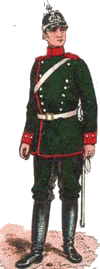


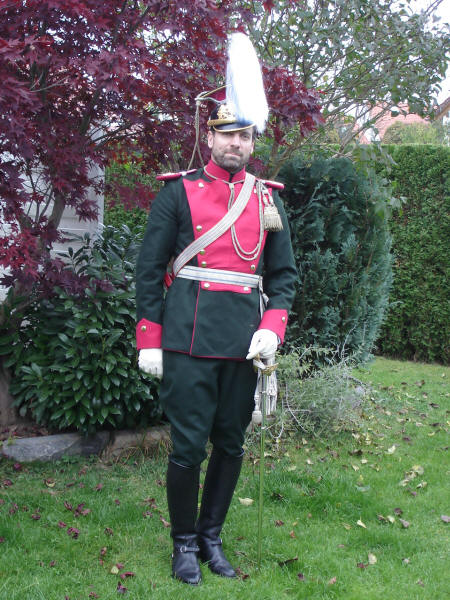



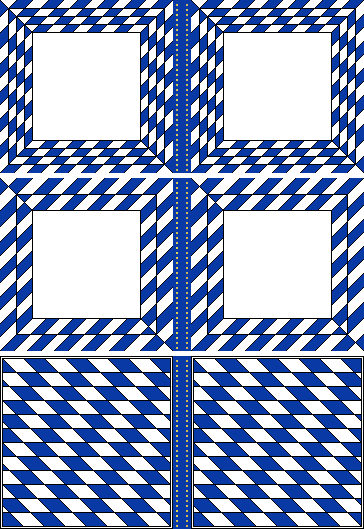

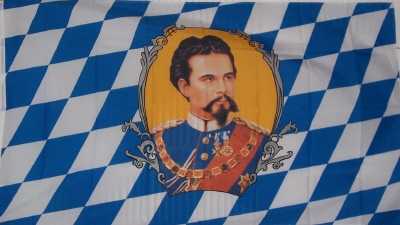
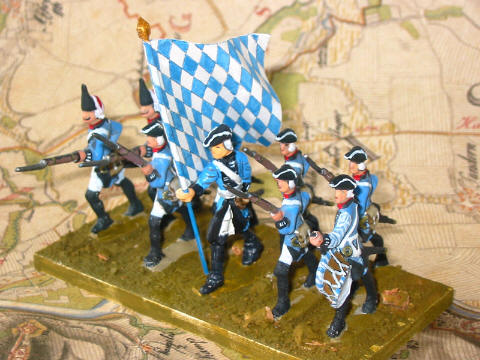


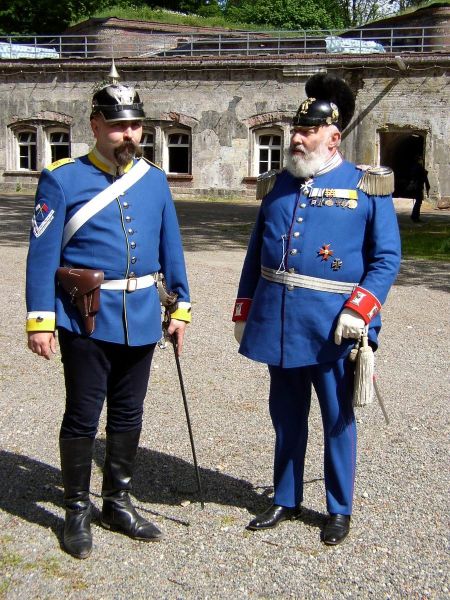

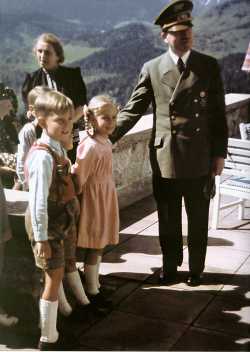
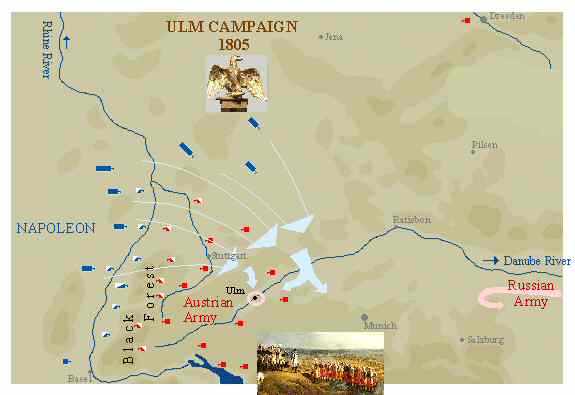

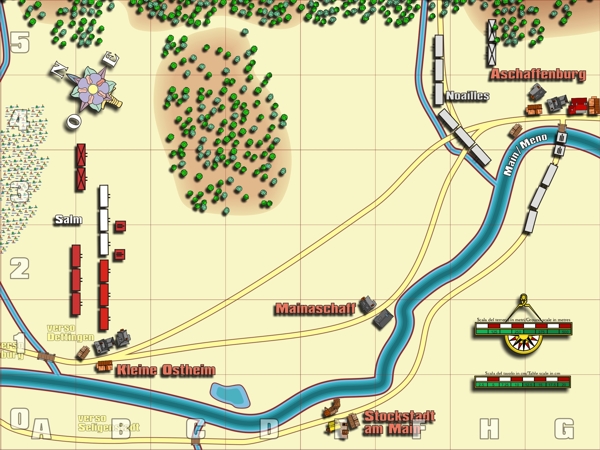
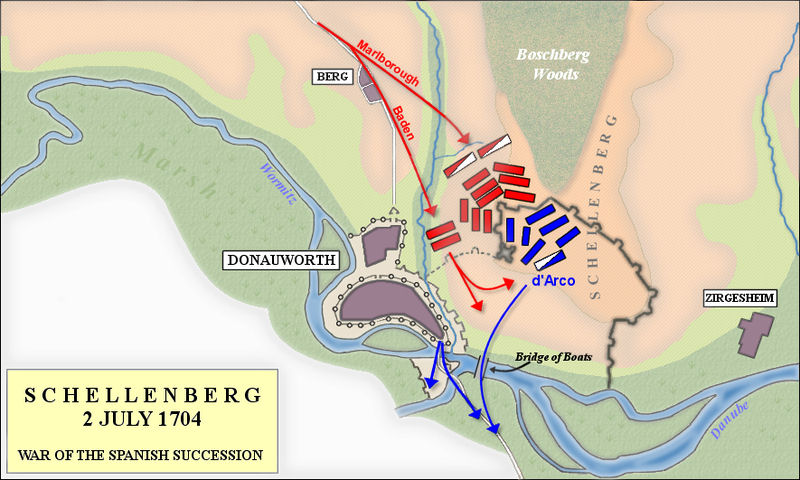
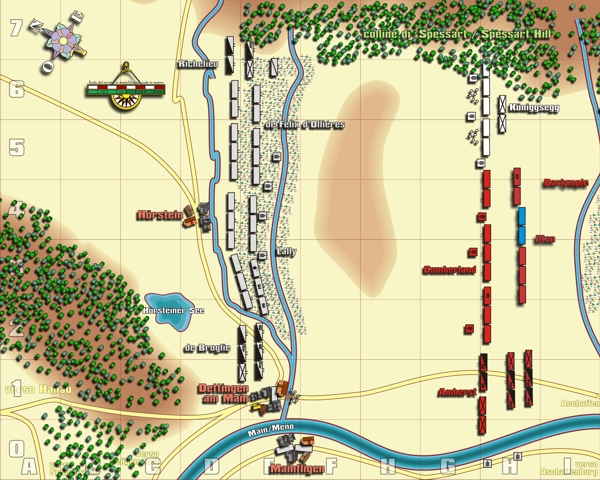
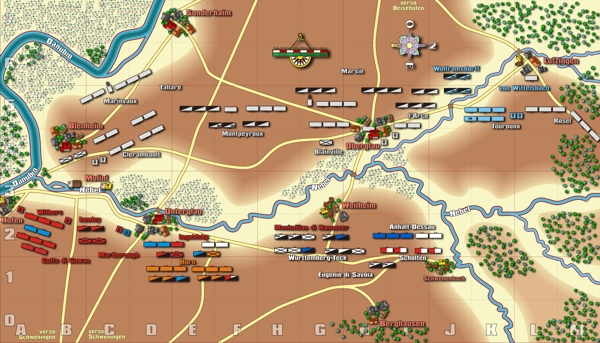
Wars and Battles involving Bavaria:
 A Battle of Abensberg B Battles of Bergisel Battle of Blenheim Battle of Brezalauspurc E Battle of Eckmühl F Battle of Freiburg G Battle of Gammelsdorf Battle of Gefrees H Battle of Hanau Battle of Höchstädt L Battle of Landshut (1809) M Battle of Mühldorf R Battle of Ramillies S Battle of Schellenberg Battle of Sedan W Battle of Wagram Bavarian War of Succession (the Potato War)
A Battle of Abensberg B Battles of Bergisel Battle of Blenheim Battle of Brezalauspurc E Battle of Eckmühl F Battle of Freiburg G Battle of Gammelsdorf Battle of Gefrees H Battle of Hanau Battle of Höchstädt L Battle of Landshut (1809) M Battle of Mühldorf R Battle of Ramillies S Battle of Schellenberg Battle of Sedan W Battle of Wagram Bavarian War of Succession (the Potato War)
Bavarian regts 1690 – 1740:
 Amigni's Infantry Regiment (sovereign's and regimental flags) BAV2 Haxthausen Infantry Regiment (sovereign's and regimental flags) BAV3 Kurprinz Infantry Regiment (sovereign's and regimental flags) BAV4 Leibregiment Infantry Regiment (sovereign's and regimental flags) BAV5 Lutzelburg Infantry Regiment (sovereign's and regimental flags) BAV6 Maffey Infantry Regiment (sovereign's and regimental flags) BAV7 Massei Infantry Regiment (sovereign's and regimental flags) BAV8 Schellenberg Infantry Regiment (sovereign's and regimental flags) BAVC1 Arco, Costa and Guard cuirassiers BAVC2 Horse Guards, Poth and Wolframsdorf cuirassiers
Amigni's Infantry Regiment (sovereign's and regimental flags) BAV2 Haxthausen Infantry Regiment (sovereign's and regimental flags) BAV3 Kurprinz Infantry Regiment (sovereign's and regimental flags) BAV4 Leibregiment Infantry Regiment (sovereign's and regimental flags) BAV5 Lutzelburg Infantry Regiment (sovereign's and regimental flags) BAV6 Maffey Infantry Regiment (sovereign's and regimental flags) BAV7 Massei Infantry Regiment (sovereign's and regimental flags) BAV8 Schellenberg Infantry Regiment (sovereign's and regimental flags) BAVC1 Arco, Costa and Guard cuirassiers BAVC2 Horse Guards, Poth and Wolframsdorf cuirassiers
 Two battles of Nördlingen (1634 + 1645
Two battles of Nördlingen (1634 + 1645 Wednesday, 2/27/13, 7:53 AM
Wednesday, 2/27/13, 7:53 AM
 In the first of these, the Spanish Tercios proved good enough troops to beat the Swedes, despite their outdated tactical formation.
In the first of these, the Spanish Tercios proved good enough troops to beat the Swedes, despite their outdated tactical formation.
 From:
From: Bavaria, on the Wurrtemberg border
Bavaria, on the Wurrtemberg border
 Web Site:
Web Site:  wikipedia
wikipedia
 Battle of Leipheim - nr Ulm - 1525
Battle of Leipheim - nr Ulm - 1525 Wednesday, 3/14/12, 9:28 AM
Wednesday, 3/14/12, 9:28 AM
 On 4 April 1525, 5,000 peasants, the Leipheimer Haufen (literally: the Leipheim Bunch) gathered near Leipheim to rise against the city of Ulm. A band of five companies, plus approximately 25 citizens of Leipheim, assumed positions to the west of the town. League reconnaissance reported to the Truchsess that the peasants were well-armed. They had powder and shot for their cannon, and they were 3,000-4,000 strong. They also had an advantageous position on the east bank of the Biber. On the left stood a wood, and on their right, a stream and marshland; behind them, they had erected a wagon fortress, and they were armed with Hook guns and some light artillery pieces.[25] As he had done in earlier encounters with the peasants, the Truchsess negotiated while he continued to move his troops into advantageous positions. Keeping the bulk of his army facing Leipheim, he dispatched detachments of horse from Hesse and Ulm across the Danube to Elchingen. The detached troops encountered a separate group of 1,200 peasants engaged in local requisitions, and entered into a lively combat, dispersing them and taking 250 prisoners. At the same time, Truchsess broke off his negotiations, and received a volley of fire from the main group of peasants. He dispatched a guard of light horse and a small group of foot soldiers against the fortified peasant position. This was followed by his main force; when the peasants saw the size of his main force—his entire force was 1,500 horse, 7,000 foot, and 18 field guns—they began an orderly retreat. Of the 4,000 or so peasants who had manned the fortified position, 2,000 were able to reach the town of Leipheim itself, taking their wounded with them in carts. Others sought to escape across the Danube, and 400 drowned there. The Truchsess' horse units cut down an additional 500. This was the first decisive battle of the Peasant War.
On 4 April 1525, 5,000 peasants, the Leipheimer Haufen (literally: the Leipheim Bunch) gathered near Leipheim to rise against the city of Ulm. A band of five companies, plus approximately 25 citizens of Leipheim, assumed positions to the west of the town. League reconnaissance reported to the Truchsess that the peasants were well-armed. They had powder and shot for their cannon, and they were 3,000-4,000 strong. They also had an advantageous position on the east bank of the Biber. On the left stood a wood, and on their right, a stream and marshland; behind them, they had erected a wagon fortress, and they were armed with Hook guns and some light artillery pieces.[25] As he had done in earlier encounters with the peasants, the Truchsess negotiated while he continued to move his troops into advantageous positions. Keeping the bulk of his army facing Leipheim, he dispatched detachments of horse from Hesse and Ulm across the Danube to Elchingen. The detached troops encountered a separate group of 1,200 peasants engaged in local requisitions, and entered into a lively combat, dispersing them and taking 250 prisoners. At the same time, Truchsess broke off his negotiations, and received a volley of fire from the main group of peasants. He dispatched a guard of light horse and a small group of foot soldiers against the fortified peasant position. This was followed by his main force; when the peasants saw the size of his main force—his entire force was 1,500 horse, 7,000 foot, and 18 field guns—they began an orderly retreat. Of the 4,000 or so peasants who had manned the fortified position, 2,000 were able to reach the town of Leipheim itself, taking their wounded with them in carts. Others sought to escape across the Danube, and 400 drowned there. The Truchsess' horse units cut down an additional 500. This was the first decisive battle of the Peasant War.
 From:
From: WikiMiniAtlas48¿26¿56N 10¿13¿15E / 48.44889¿N 10.22083¿E / 48.44889; 10.22083
WikiMiniAtlas48¿26¿56N 10¿13¿15E / 48.44889¿N 10.22083¿E / 48.44889; 10.22083
 Web Site:
Web Site:  wikipedia military history project
wikipedia military history project
 Cassandro cav. Francesco
Cassandro cav. Francesco Friday, 4/15/11, 12:55 AM
Friday, 4/15/11, 12:55 AM
 Interesting historical documentation. Ciao greetings from Venice
Interesting historical documentation. Ciao greetings from Venice
 From:
From: Venice Italy
Venice Italy
 Web Site:
Web Site:  Cassandra Model toy soldiers
Cassandra Model toy soldiers
 Email:
Email:  cassandra.model@libero.it
cassandra.model@libero.it
 FRANCO-AUSTRIAN WAR OF 1809/ WAR OF THE FIFTH COALITION
FRANCO-AUSTRIAN WAR OF 1809/ WAR OF THE FIFTH COALITION Wednesday, 11/3/10, 8:23 AM
Wednesday, 11/3/10, 8:23 AM
 The battle of Landshut (21 April 1809) saw the French force their way across the River Isar, completing the defeat of the left wing of the Austrian army that began on the previous day at Abensberg The battle of Neumarkt (24 April 1809) was a rare French defeat during the Bavarian stage of the Franco-Austrian war of 1809 and saw the retreating Austrian left wing defeat Marshal Bessières' smaller pursuing column. http://www.historyofwar.org/articles/battles_neumarkt .html The battle of Ratisbon or Regensburg (23 April 1809) was the final major battle in the initial Bavarian phase of the Franco-Austrian War of 1809 (Fifth Coalition), and saw the French push the Austrians out of their last foot hold on the southern bank of the Danube. http://www.historyofwar.org/articles/battles_regensbu rg.html The combat of Salzburg, 29 April 1809, saw a small force of Napoleon's Bavarian allies capture the Austrian city of Salzburg, although they failed to intercept an Austrian column retreating from Munich (Franco- Austrian War of 1809) http://www.historyofwar.org/articles/combat_salzburg. html
The battle of Landshut (21 April 1809) saw the French force their way across the River Isar, completing the defeat of the left wing of the Austrian army that began on the previous day at Abensberg The battle of Neumarkt (24 April 1809) was a rare French defeat during the Bavarian stage of the Franco-Austrian war of 1809 and saw the retreating Austrian left wing defeat Marshal Bessières' smaller pursuing column. http://www.historyofwar.org/articles/battles_neumarkt .html The battle of Ratisbon or Regensburg (23 April 1809) was the final major battle in the initial Bavarian phase of the Franco-Austrian War of 1809 (Fifth Coalition), and saw the French push the Austrians out of their last foot hold on the southern bank of the Danube. http://www.historyofwar.org/articles/battles_regensbu rg.html The combat of Salzburg, 29 April 1809, saw a small force of Napoleon's Bavarian allies capture the Austrian city of Salzburg, although they failed to intercept an Austrian column retreating from Munich (Franco- Austrian War of 1809) http://www.historyofwar.org/articles/combat_salzburg. html
 Web Site:
Web Site:  Historyofwar
Historyofwar
 the eagles nest berghof etc
the eagles nest berghof etc Monday, 3/16/09, 3:29 PM
Monday, 3/16/09, 3:29 PM
 From:
From: berchtesgaden
berchtesgaden
 Web Site:
Web Site:  ety
ety
 thumbnails of Bavarian troops
thumbnails of Bavarian troops Monday, 3/2/09, 4:51 AM
Monday, 3/2/09, 4:51 AM
 incl early and midC19 and the Greek expedition 1822- 35
incl early and midC19 and the Greek expedition 1822- 35
 Web Site:
Web Site:  Uniformology
Uniformology
 Bavarian expedition to Greece 1822-35
Bavarian expedition to Greece 1822-35 Monday, 3/2/09, 4:48 AM
Monday, 3/2/09, 4:48 AM
 Bavarian army of the War of the Spanish Succession
Bavarian army of the War of the Spanish Succession Sunday, 3/1/09, 10:31 AM
Sunday, 3/1/09, 10:31 AM
 The Bavarian Army was a standing army that had been founded by the previous elector of Bavaria. In 1682 Max Emanuel had doubled its size to 7 infantry regiments, 4 cavalry regiments and 4 dragoon companies. This size of this army was substantially below that of any of the major powers, but even then it could not be maintained by the income and credit of Bavaria. The substantial participation of the Bavarian army in the war against the Turks, where it gained a lot of experience, was therefore only possible on account of subsidies. After the peace of Rijswijk the size of the Bavarian army was reduced. We have an overview of the strength of the Bavarian army in 17011. In 1701 the regular infantry counted a guard regiment of three battalions, five regiments of two battalions and four independent battalions. The militia counted 12 battalions and so the infantry totaled 29 battalions. The cavalry consisted of 17 cavalry squadrons and 12 dragoon squadrons. We'll see that according to its numbers the Bavarian army was very comparable to the Prussian. 1701 was also the year Bavaria started to deal with France and concluded a first treaty. By this it was obliged to raise the strength of its army to 15,000 men in return for a monthly subsidy of 45,000 dollars. The regiments stationed in the Spanish Netherlands were meanwhile returned to Bavaria a movement which was completed in April 17012. In August 1702 the first treaty with France was followed by a treaty which obliged Max Emanuel to raise his army to 25,000 men. Apart from adding a Cuirassier regiment in 1702, an additional infantry regiment in 1703 and a third battalion to the infantry regiments the basic organisation of the Bavarian amry did however remain unchanged till early 1704. Meanwhile Max Emanuel started to strengthen his militia troops. In the early summer of 1704 the Bavarian army reached its zenith: 8 cavalry regiments fielding 47 squadrons and 9 regular infantry regiments fielding 26 battalions. This for a 'soll' strength of 28,250 men which was probably nearer to 19,000 in reality3. In 1704 the Bavarian amry suffered heavy losses in the battle of the Schellenberg and comparably light losses in the battle of Blenheim. The loss of the troops which were in Bavaria when the country was subsequently reduced did however lead to only a small force continuing the struggle in the Spanish Netherlands. The Bavarian troops then suffered again in the battle for the Brabant lines and the battle of Ramillies, but did continue the fight till the end of the war.
The Bavarian Army was a standing army that had been founded by the previous elector of Bavaria. In 1682 Max Emanuel had doubled its size to 7 infantry regiments, 4 cavalry regiments and 4 dragoon companies. This size of this army was substantially below that of any of the major powers, but even then it could not be maintained by the income and credit of Bavaria. The substantial participation of the Bavarian army in the war against the Turks, where it gained a lot of experience, was therefore only possible on account of subsidies. After the peace of Rijswijk the size of the Bavarian army was reduced. We have an overview of the strength of the Bavarian army in 17011. In 1701 the regular infantry counted a guard regiment of three battalions, five regiments of two battalions and four independent battalions. The militia counted 12 battalions and so the infantry totaled 29 battalions. The cavalry consisted of 17 cavalry squadrons and 12 dragoon squadrons. We'll see that according to its numbers the Bavarian army was very comparable to the Prussian. 1701 was also the year Bavaria started to deal with France and concluded a first treaty. By this it was obliged to raise the strength of its army to 15,000 men in return for a monthly subsidy of 45,000 dollars. The regiments stationed in the Spanish Netherlands were meanwhile returned to Bavaria a movement which was completed in April 17012. In August 1702 the first treaty with France was followed by a treaty which obliged Max Emanuel to raise his army to 25,000 men. Apart from adding a Cuirassier regiment in 1702, an additional infantry regiment in 1703 and a third battalion to the infantry regiments the basic organisation of the Bavarian amry did however remain unchanged till early 1704. Meanwhile Max Emanuel started to strengthen his militia troops. In the early summer of 1704 the Bavarian army reached its zenith: 8 cavalry regiments fielding 47 squadrons and 9 regular infantry regiments fielding 26 battalions. This for a 'soll' strength of 28,250 men which was probably nearer to 19,000 in reality3. In 1704 the Bavarian amry suffered heavy losses in the battle of the Schellenberg and comparably light losses in the battle of Blenheim. The loss of the troops which were in Bavaria when the country was subsequently reduced did however lead to only a small force continuing the struggle in the Spanish Netherlands. The Bavarian troops then suffered again in the battle for the Brabant lines and the battle of Ramillies, but did continue the fight till the end of the war.

